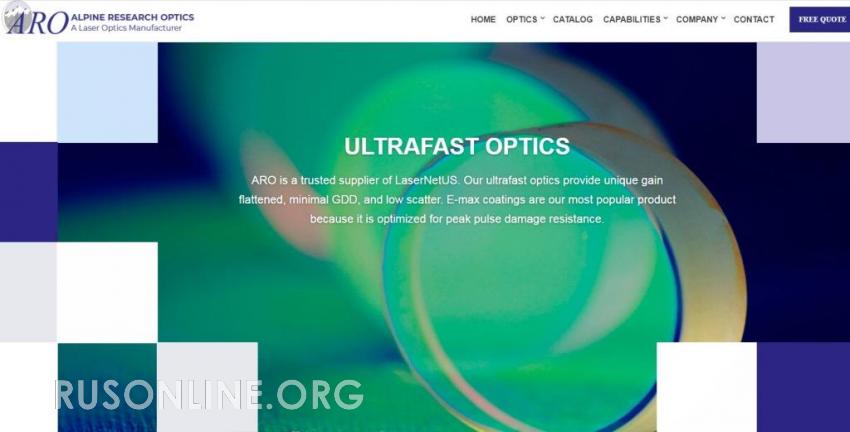Laser and ultra fast optics from ARO

Ultra-fast optics
Optical metamaterials are usually referred to as specially created nanostructures that have unique optical properties that are not typical for conventional bulk media. Due to the special geometric shape of meta-atoms, the optical response of such structures can lead to phenomena such as optical magnetism or negative refractive index. It has been shown that the unique properties of metamaterials can be used to create so-called superlens, invisibility cloaks, and all-optical switching devices.Phase-contrast microscopy, invented nearly 100 years ago by Dutch physicist Fritz Zernike, works by taking advantage of the fact that light waves slow and accelerate as they enter various materials.For example, if a ray of light passes through a piece of glass, it slows down when it enters the glass and then accelerates again when it exits. These speed changes change the timing of the waves. With some optical techniques, the light that has passed through glass can be distinguished from light that was not there, and glass, although transparent, becomes much easier to see. With such an approach we create the most advanced ultra fast optics.
Laser optics
As before, the main criteria for evaluating a laser processing system are the speed and quality of the ongoing technological process. However, the requirement for the maximum productivity of FEU, associated with environmental issues, energy, and resource conservation, has become a paradigm. In this regard, LTU OSs are endowed with a wide range of additional functions, and in complexity, they compete with laser sources and often surpass them.Regardless of the ongoing technological process, the type of laser source, the material being processed, and other conditions, any OS of the LTU should perform the following functions:
- to form the spatial characteristics of the beam, providing the required energy of the process;
- compensate for laser-induced changes in these characteristics;
- manage them according to a given law;
- form a processing field of the required size;
- ensure the required absolute accuracy of beam positioning in the processing field;
- be free from glare reflected from the surfaces of the OS and focused on the optics of the laser source;
- have sufficient radiation strength and long-term resistance to the products of destruction of the object during processing.At ARO we perform all these steps to create the best and the most sufficient optical appliances and laser optics to work with lasers.
Fiber optics
The use of fiber optics, in contrast to copper cables with "twisted pairs", almost eliminates mutual influences between circuits; it is not subject to external electromagnetic influences (such as lightning discharges).Thirdly, only a fiber-optic cable provides galvanic isolation of information network segments. This list can be continued if desired.The cable is undoubtedly an important element of the fiber-optic network, but the devices that are installed at their ends are no less important. We are talking about optical connectors (connectors), various connectors, cross-over panels, and mounting cabinets.We focus on optical equipment used by system integrators and installers in the US local area network market.


























